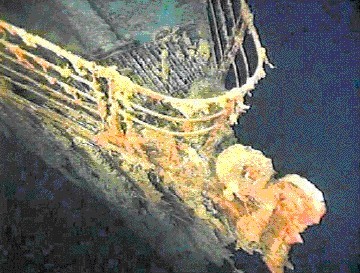
Storage is one of the biggest challenges to a sustainable energy future, especially for wind and solar. In the latter’s case, how can solar energy be stored so that it can be available any time, day or night, when the sun shining or not?
It appears that rust . . . it’s cheap, abundant and can be used as a semi-conductor . . . may hold one of the keys.
EPFL (Ecole Polytechnique Federale de Lausanne) scientists are developing a technology that can transform light energy into a clean fuel source with a neutral carbon footprint: hydrogen.
The basic ingredients of the recipe are water and metal oxides, such as iron oxide, better known as rust. The EPFL team led by Kevin Sivula has twigged the need to work with low cost materials and a process that is scaleable to enable the production of economically viable solar hydrogen.
The idea of converting solar energy into hydrogen is not new and it was during the 1990s that EPFL with Geneva scientists invented the photoelectrochemical (PEC) tandem solar cell, a technique for producing hydrogen directly from water.
Their prototypes shared the same basic principle: a dye-sensitised solar cell combined with an oxide-based semiconductor.
The device is completely self-contained. The electrons produced are used to break up water molecules and reform the pieces into oxygen and hydrogen.
In the same liquid, two distinct layers in the device have the job of generating electrons when stimulated by light; an oxide semiconductor, which performs the oxygen evolution reaction, and a dye-sensitised cell, which liberates the hydrogen.
The latest prototype seeks to solve the main outstanding problem with PEC technology: its cost, which to date has been very high, hence the use of rust.
The most expensive material in the latest device is the glass plate, according to Sivula. However, the efficiency is still low – between 1.4% and 3.6%, depending on the prototype used.
“With our less expensive concept based on iron oxide, we hope to be able to attain efficiencies of 10% in a few years, for less than $80 per square metre, says Sivula.
“At that price, we’ll be competitive with traditional methods of hydrogen production.”
And the semiconductor, that performs the oxygen evolution reaction, is just plain old-fashioned iron oxide.
“It’s a stable and abundant material. There’s no way it will rust any further.”
The problem is that it is one of the worst semiconductors available.
The twist that the EPFL team is using is to develop silicon oxide-enhanced nano-rust which is covered with a nanometer-thin layer of aluminum oxide and cobalt oxide to optimise the electrochemical properties of the material, but are nonetheless simple to apply.
The second part of the device comprises a dye and titanium dioxide – the basic ingredients of a dye-sensitised solar cell. This second layer lets the electrons transferred by the iron oxide gain enough energy to extract hydrogen from water.
And the potential? Up to 16% efficiency according to Sivula.
That is a lot better than anything that has so far been achieved using surplus wind power capacity.